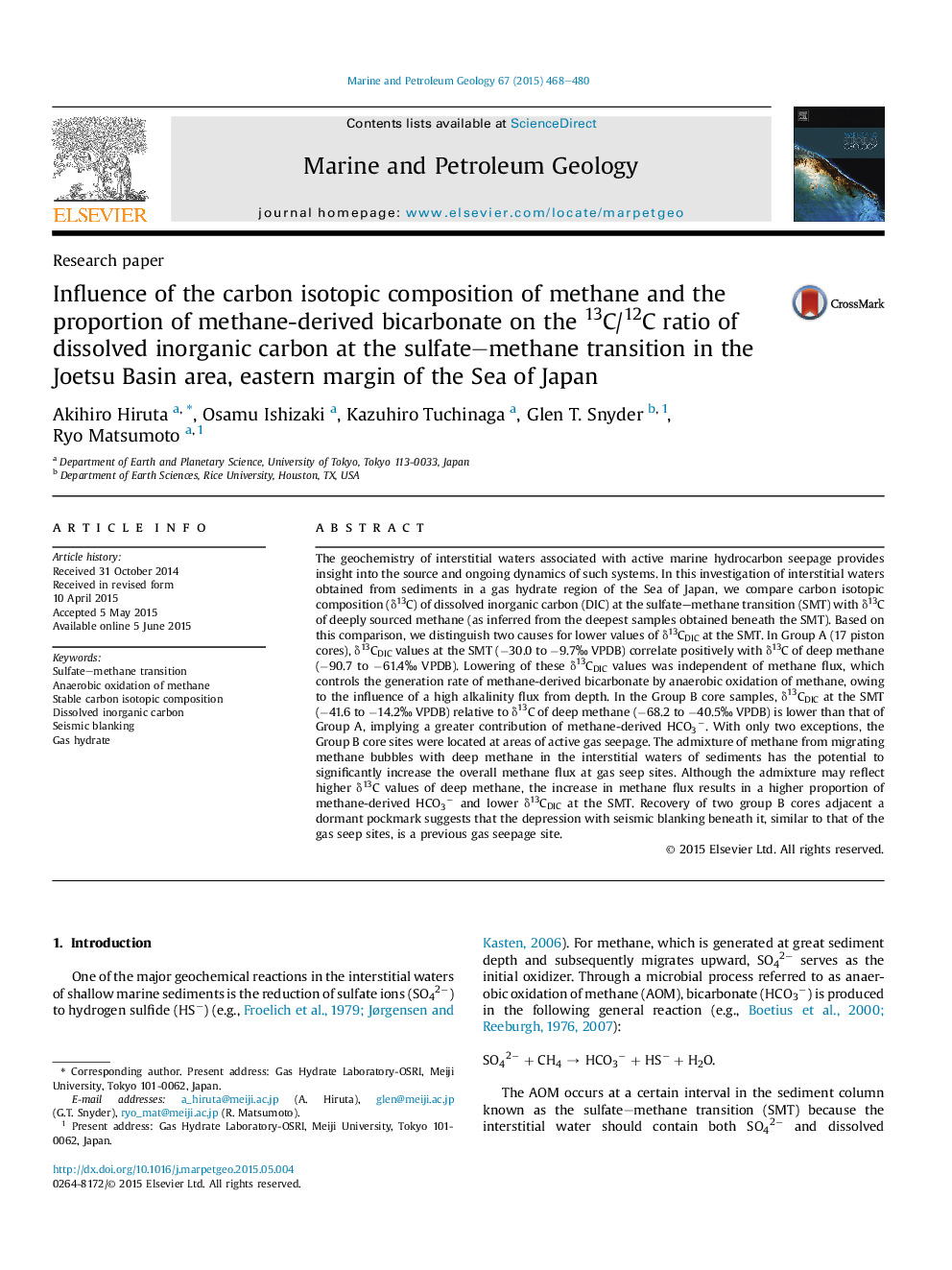| کد مقاله | کد نشریه | سال انتشار | مقاله انگلیسی | نسخه تمام متن |
|---|---|---|---|---|
| 6434945 | 1637159 | 2015 | 13 صفحه PDF | دانلود رایگان |

- Comparison of δ13C of DIC at SMT and δ13C of methane reveals two groups.
- In the first group, δ13CDIC at SMT correlates with δ13C of methane.
- Low δ13CDIC in the second group is due to a high proportion of methane-derived DIC.
- Piston core data at active gas seep sites belong to the second group.
- Admixture of methane from gas bubbles increases overall methane flux.
The geochemistry of interstitial waters associated with active marine hydrocarbon seepage provides insight into the source and ongoing dynamics of such systems. In this investigation of interstitial waters obtained from sediments in a gas hydrate region of the Sea of Japan, we compare carbon isotopic composition (δ13C) of dissolved inorganic carbon (DIC) at the sulfate-methane transition (SMT) with δ13C of deeply sourced methane (as inferred from the deepest samples obtained beneath the SMT). Based on this comparison, we distinguish two causes for lower values of δ13CDIC at the SMT. In Group A (17 piston cores), δ13CDIC values at the SMT (â30.0 to â9.7â° VPDB) correlate positively with δ13C of deep methane (â90.7 to â61.4â° VPDB). Lowering of these δ13CDIC values was independent of methane flux, which controls the generation rate of methane-derived bicarbonate by anaerobic oxidation of methane, owing to the influence of a high alkalinity flux from depth. In the Group B core samples, δ13CDIC at the SMT (â41.6 to â14.2â° VPDB) relative to δ13C of deep methane (â68.2 to â40.5â° VPDB) is lower than that of Group A, implying a greater contribution of methane-derived HCO3â. With only two exceptions, the Group B core sites were located at areas of active gas seepage. The admixture of methane from migrating methane bubbles with deep methane in the interstitial waters of sediments has the potential to significantly increase the overall methane flux at gas seep sites. Although the admixture may reflect higher δ13C values of deep methane, the increase in methane flux results in a higher proportion of methane-derived HCO3â and lower δ13CDIC at the SMT. Recovery of two group B cores adjacent a dormant pockmark suggests that the depression with seismic blanking beneath it, similar to that of the gas seep sites, is a previous gas seepage site.
Journal: Marine and Petroleum Geology - Volume 67, November 2015, Pages 468-480